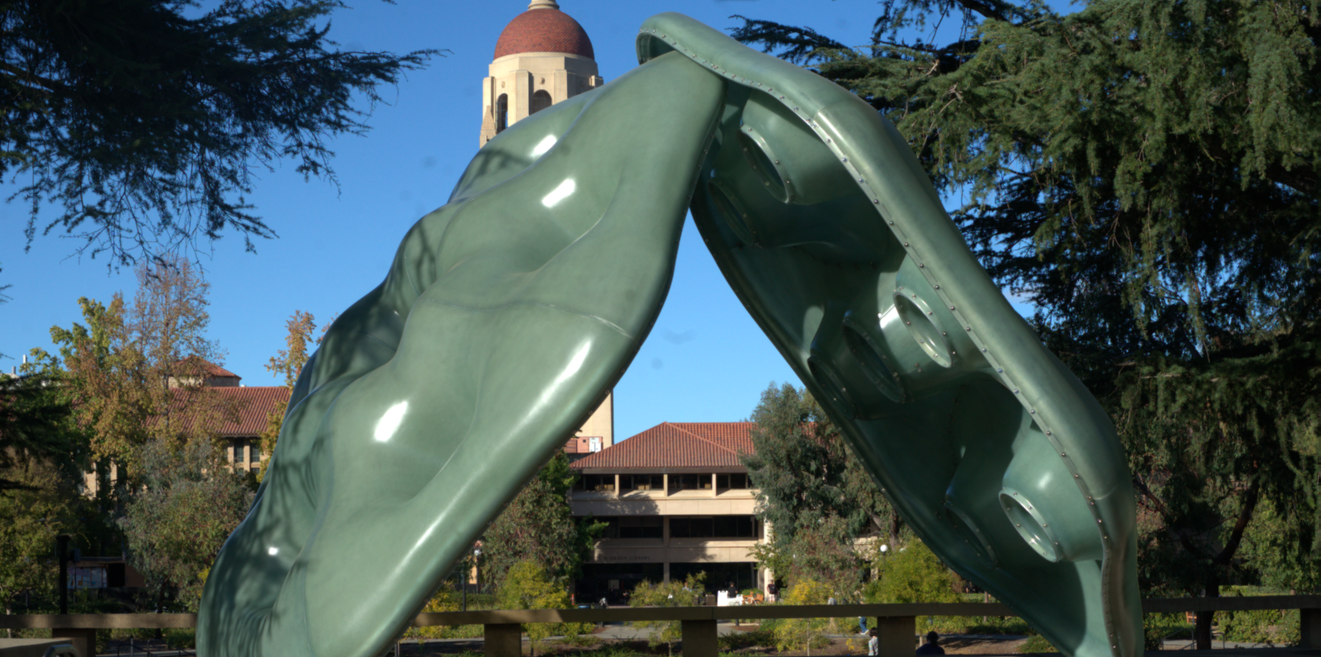Months after students bid the beloved “churro” sculpture farewell, another life-sized abstract artwork graced the platform overlooking Meyer Green.
“Amulets” was unveiled at the “Welcome, Amulets” event on Thursday as the newest addition to Stanford’s Plinth Project. The initiative, overseen by the Stanford Public Art Committee, seeks to expand public art on campus through the commission and rotation of new art installations displayed at Meyer Green.
Sponsored by the Vice Presidency for the Arts (VPA), the event offered students, faculty and staff an opportunity to meet “Amulets” sculptor Alia Farid and sculpt their own miniature amulets with air-dry clay.
The sculpture features two large, teal-green amulets that lean upon each other at their tips. Farid utilized different materials to juxtapose the rich history of ancient Mesopotamia with the impacts that extractive industries have had on what’s now Iraq.
“I think materials have meaning,” Farid said. With “Amulets,” she aimed to combine “a modern material [of plastic resin] with an ancient material which is blue faience.”
The sculptor added that she placed emphasis on these ancient artifacts “by scaling up the amulets such as to bring something that’s normally highly inconspicuous and small into something new.”
Attendee Anabelle Shilling ’28 commented on the impact the sculpture had on its surroundings and passersby.
“It does kind of inspire awe,” Shilling said. When talking about how she might be personally influenced by the sculpture, she added: “It makes my exams feel a little less daunting.”
Shilling also appreciated the convenience and accessibility of the outdoor, public art installation. “I don’t have a lot of time to go into the interior of design spaces or the museums around campus,” she said. “I like being able to see [the sculpture] casually when I’m going from place to place.”
“Amulets” is the second work commissioned for the Stanford Plinth Project. The first installation brought to campus by the Plinth Project was “Hello,” affectionately nicknamed by students as “the churro,” created by Shanghai-based artist Xu Zhen.
Now “Amulets” has taken the place of “Hello” at Meyer Green after the latter structure greeted passersby for its two years on display.
Stanford Public Art program manager Mark Shunney finds great value in adding to the community public art installations like “Amulets.”
“An object like this that then pulls in histories around an object that goes back six thousand years is an exact example of how public art can create dialogue,” he said. By enlarging the usually small gemstones, “we approached them differently; we see them from a different lens.”
